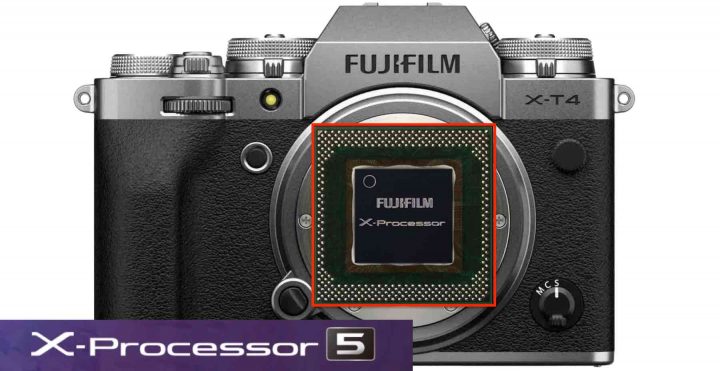The Terrific Potential of X Processor 5 and Non-Stacked 26MP Combo (FR-Readers Wish, not Rumor)

The Wish
There is this wish… or idea… that keeps coming up in the comments in the last few months.
Initially I kind of ignored it, but since it is coming up over and over again, I took my time to think it through.
Here are the conclusions I came up with.
Unlocking the Power
It all started with the article where I asked the FR community which sensor they wanted in future cameras, the 40MP non-stacked or 26MP stacked sensor.
- Which 5th Generation Sensor do You Want in the Fujifilm X-T5, X-Pro4, X-E5, X-S20, X-T40, X80, X200?
To my surprise, many did not want any of the new sensor. What they want is the current 26MP non-stacked sensor in combination with the new X Processor 5.
And once we shared rumors about the Fujifilm X-S20 and wondered if it will have the 40MP or 26MP stacked sensor, some people kept expressing their wish for the “old” 26MP to be used.
So why is that?
It’s about unlocking a potentially terrific power.
The Facts
Keep in mind this:
- the 40MP and “old” 26MP are both non stacked BSI sensors, sharing substantially the very same sensor architecture, except that one sensor has more megapixel than the other
- even with the new X Processor 5, the 40MP sensor is slower to read out than the non-stacked 26MP sensor with the older X Processor 4
- in fact, Fujifilm managers reported in internal press meetings, that the X-H2 has a lower AF calculation frequency than the X-T4
So how is it that the X-H2 and X-T5 beat the X-T4 autofocus, even if it makes less AF calculations?
Well, the new X Processor 5 allows to run the much more sophisticated new AF algorithm on the Fujifilm X-T5 and X-H2, which means the X-T5 and X-H2 have better and smarter predictive autofocus. That’s why, according to Fujifilm managers, the X-T5 and X-H2 beat the X-T4.
Pros and Cons
With the above in mind, I thought at the Pros and Cons of using the “old” 26MP sensor on some of the future cameras.
PROS of having X-Processor 5 combined with “older” non-stacked 26MP sensor
- potentially faster AF than 40MP cameras due the combination of faster AF frequency readout with new AF algorithm of X-Processor 5
- potentially improved noise performance over current 26MP cameras (better signal to noise ratio with new processor)*/**
- access to all the latest film simulations
- unlock feature like AI auto white balance and maybe even pixel shift
- most affordable option in Fuji’s lineup and yet perform better than X-T5 and X-H2 in terms of autofocus speed and tracking
- the more efficient X-Processor 5 could allow for better video specs in cameras with smaller bodies due to less heat generated by the more modern processor, especially if combined with the 26MP sensor, as that one is faster to read out than the 40MP sensor
*note of FR reader Quikee2 in the comments: “You need to rethink that… You can’t get a better S/N ratio with a change of the processor. S/N ratio is a property of photosites. Also AFAIK 40MP sensor is using the improved vertical photosite structure, which improves the S/N ratio. Which is the reason they could go down to 125 ISO. Só the “old” 26 MP and the 40 MP sensor don’t use essentially the same architecture.”
** Fujifilm officially writes: “The high-resolution 40.2MP X-Trans CMOS 5 HR sensor has an enhanced image-processing algorithm that boosts resolution without compromising the signal-to-noise ratio”
That’s confusing, as they make it sound like it was the enhanced image-processing algorithm to improve signal to noise performance, not the sensor architecture itself – source: Fujifilm.
CONS of having X-Processor 5 combined with “older” non-stacked 26MP sensor
- risk that the sensor is perceived as “old” and therefore cameras featuring it will not sell well, wasting Fujifilm’s R&D
- if such a camera would really turn out to be sensibly faster in terms of AF and tracking than X-T5 and X-H2, then there is the risk of cannibalising stacked sensor X-H2S sales (less risk for X-H2 and X-T5, as they appeal to customers who want more megapixel)
Where the 40MP would remain unbeatable
- the 40MP sensor would remain the better option for precise autofocus due it the more megapixel, as Fujifilm explained here. But on the other hand, ultra clinically sharp autofocus becomes more relevant the higher the megapixel number is and hence does not matter so much for 26MP cameras as it does for 40MP cameras.
Speculations are NOT Rumors
Overall I came to the conclusion that the Pros beat the Cons, and that actually a combination X-Processor 5 with 26MP non-stacked sensor could give us a terrific good performance.
But I need to make clear one thing: this is all just speculation so far. Not a rumor.
The whole point of this article is to say that personally I see some potential for the older sensors in combination with the new processor, and I’d love to hear what you guys would think about it.
But I have no idea if Fujifilm has any plans for that. So please don’t sh*tstorm on FujiRumors if such cameras never see the light of the day. Just fun speculations based on FR-readers wishes, no more than that.
- Fujifilm X-T5: BHphoto / AmazonUS / Adorama / Moment
- Fujifilm X-H2: BHphoto / AmazonUS / Adorama / Moment
- Fujifilm X-H2s: BHphoto / AmazonUS / Adorama / Moment

